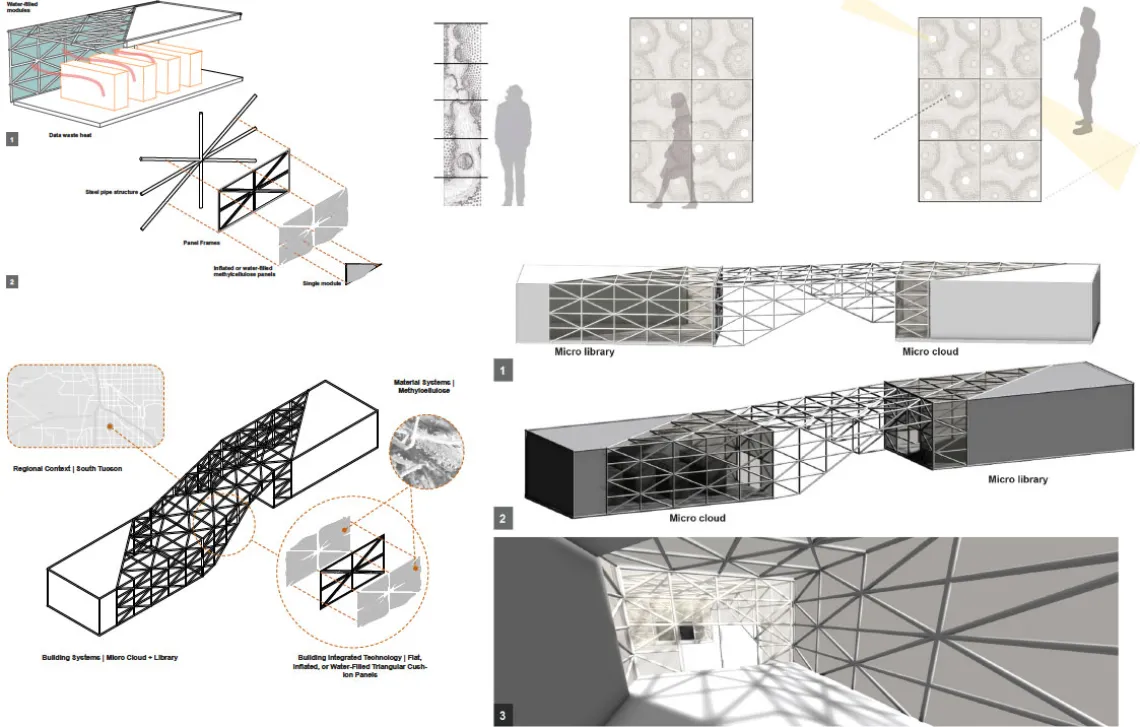What Materials Can Make Data Centers Sustainable? Architecture Professor Aletheia Ida Leads UArizona Students in Google and Microsoft Collaboration

Micro-cloud integration: waste heat transfer (recycled materials). Recycled aluminum heat-sink elements for transferring heat off processing core racks to outdoor ambient air or other spaces and uses. Image by Nikolas Altamura '21 B Arch.

Aletheia Ida, Associate Professor of Architecture.
Associate Professor of Architecture Aletheia Ida and University of Arizona students in architecture and biosystems engineering recently concluded a year-long, collaborative research and design project with the University of Washington and University of Pennsylvania funded by Google, with in-kind support from Microsoft.
The study’s purpose: explore a more sustainable future for data centers—“a moonshot for this age,” says Julie Kriegh, research scientist at the University of Washington and the project’s lead scientist.
Globally, data centers account for 1% of all electricity usage, using 300 terrawatt hours of electricity each year. As Nate Berg notes in a November 4, 2021 article showcasing the results of this unique collaborative project—“The internet is killing the environment. These students came up with a brilliant design fix”—fossil fuels still account for the majority of the world’s energy supply, so “the essential elements of the internet are taking a heavy toll on the environment.”
With input from Google and Microsoft, Ida, Kriegh, University of Pennsylvania Assistant Professor of Architecture Dorit Aviv and students from their respective institutions each examined a different aspect of data center design, contributing to a book published in October 2021: Launching a Sustainable Data Center for the Future.

Contextual relationships of material technologies and building integration. Image by Zoe Sadorf '21 M Arch.
The fascinating, image-rich book focuses on several key areas critical to the design of future sustainable data centers: innovation, holistic design and context. While students from the University of Washington focused on data center design and Penn students focused on climate, UArizona students explored materials.
Ida and 21 UArizona students representing the Bachelor of Architecture, Master of Architecture, Master of Science in Architecture and PhD in Biosystems Engineering focused on “material futures for micro-clouds” through a 16-week elective course in Fall 2020 that began with an investigation into material properties, explored material probes and concluded with design integration proposals.
“The micro-cloud building type provides a unique opportunity for rethinking the material compositions of data center enclosure systems because of the extreme energy use and heat production from the systems,” says Ida. “Such interior environments encourage new investigations of the potential for materials to be selected and designed in ways that work with the outdoor climate while minimizing carbon, energy and water impacts.”
After students conducted material properties research—including life-cycle diagrams to provide a visualization of the material flow from sourcing, manufacturing, transport and implementation to end-of-life—they worked directly with their chosen materials to better understand the materials’ possibilities in data center use, ultimately fabricating their own samples with support from CAPLA Materials Labs Director Paulus Musters. Then, identifying a particular phenomenon of interest (i.e., structural, light, heat, acoustic, chemical, etc.), the students conducted testing on the materials, ranging from compression, flex and tension for examinations of structure, to source and wavelengths for light, to thermal properties under different solar and shade conditions for heat. Students concluded their research and fabrication by envisioning the material integration with the self-sustaining micro-cloud units—i.e., the alternative, energy-efficient, carbon-neutral materials data centers can be constructed from.

Micro-cloud applications: daylighting adaptation (biopolymers). Biopolymer modules with varying opacities for daylighting adaptation in building enclosure. Image by Athena Myers '21 M Arch).
“At the forefront of students’ thinking process were interscalar relationships between regional material resources, climate and environmental concerns,” says Ida.
The students didn’t limit their focus to building materials themselves; they also considered data center locations and regional networks. “Students speculated on the potential for micro-clouds to be inserted into both urban and rural communities and provide co-benefits to cultural and environmental performances.”
Though the student research, design and fabrication was limited to a single semester, their work lives on not only in the newly published book—as an informant to Google and Microsoft in their data center designs—but also in students’ further pursuits. “Some of the material systems and modules proposed in this class have become the seeds for student thesis projects and potential building product startups,” notes Ida.
For more information, view Launching a Sustainable Data Center for the Future, read a February 17, 2021 article in Metropolis, "An Online World That Doesn't Destroy the Real One," or explore the hands-on academic programs of the School of Architecture at the University of Arizona.



